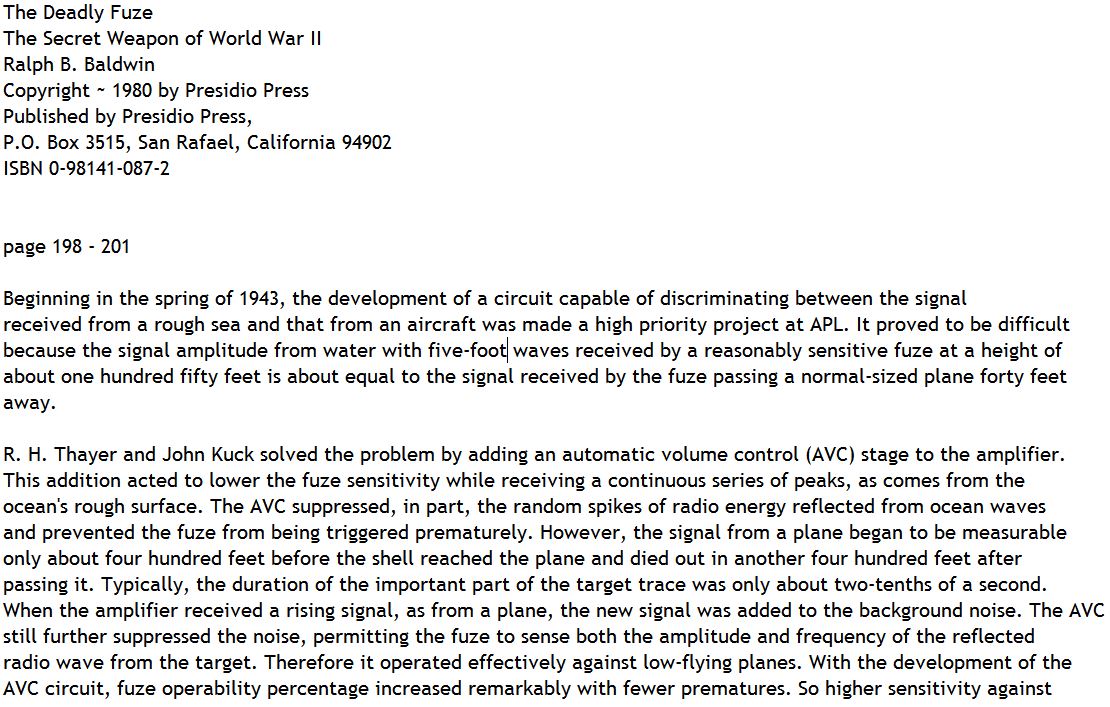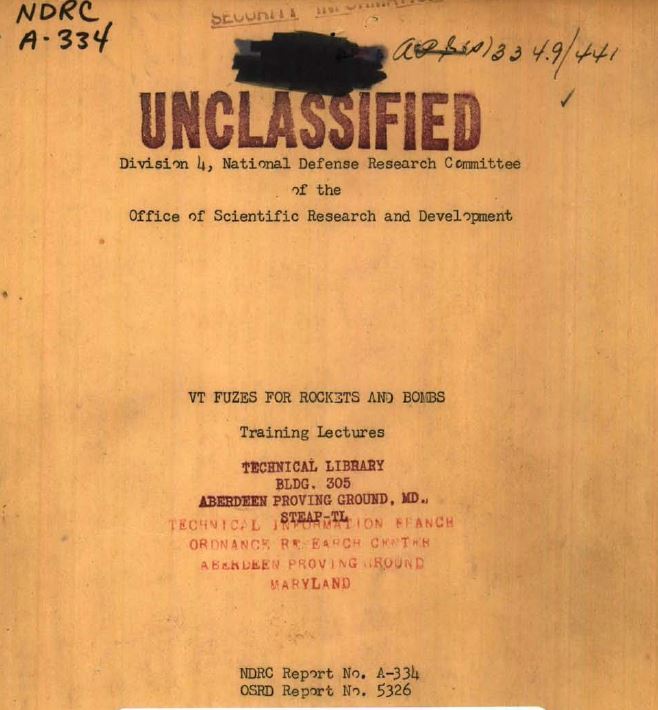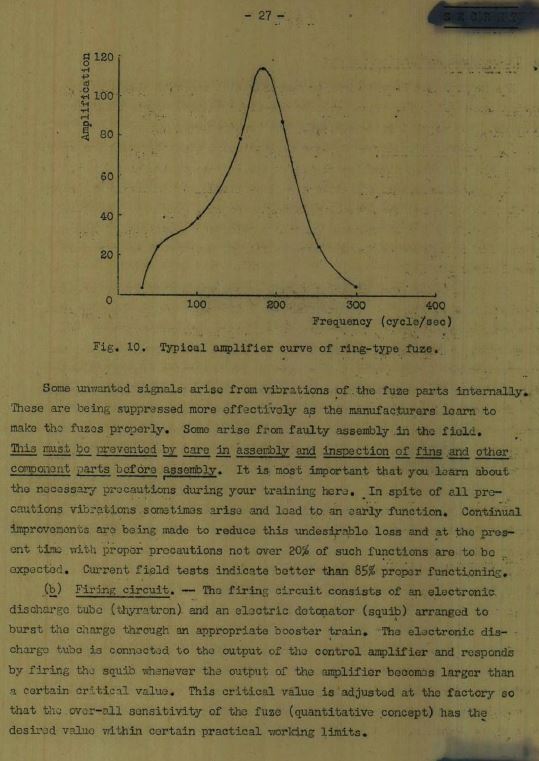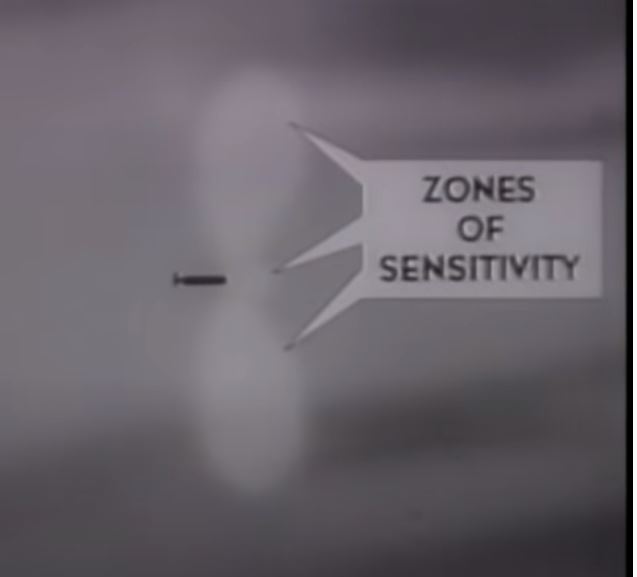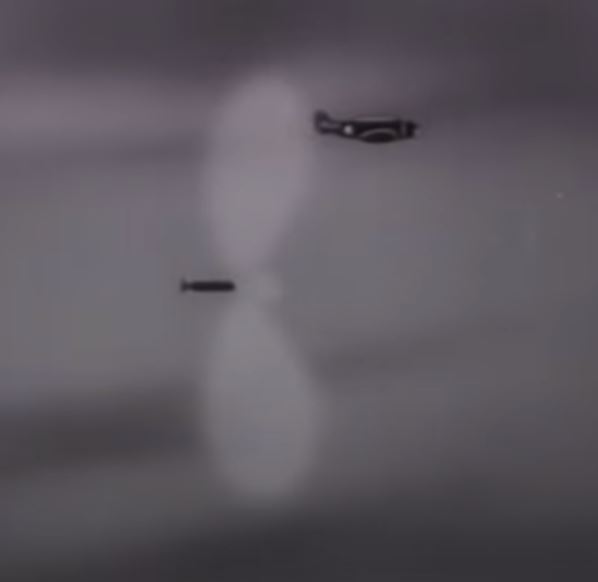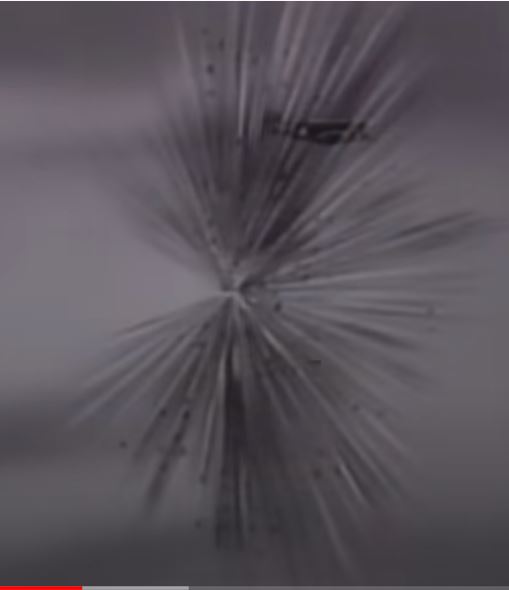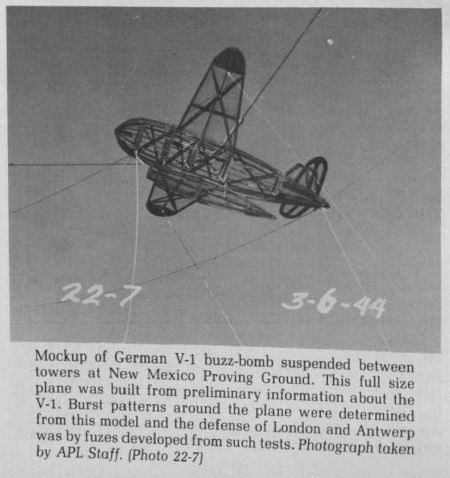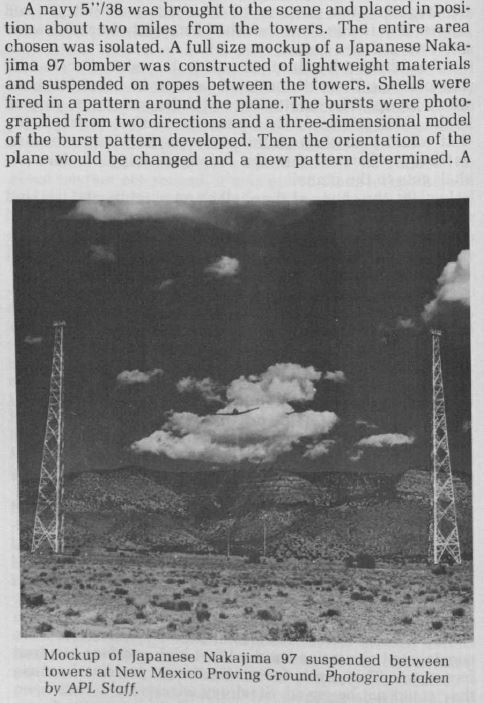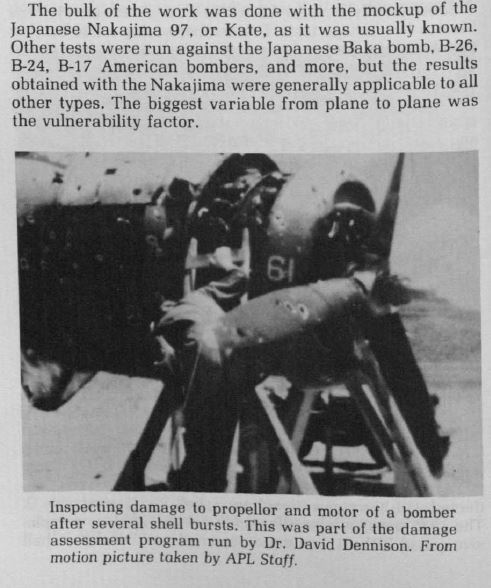@AC_NavalHistory
@ArmouredCarrier
@Drachinifel
@AirPowerHistory
@Bis18marck70
@MilHiVisualized
@CBI_PTO_History
@TIKhistory
@TheBaseLeg
This is a VT-Fuze thread replying to this tweet. https://twitter.com/TheBaseLeg/status/1264423620018728960">https://twitter.com/TheBaseLe...
@ArmouredCarrier
@Drachinifel
@AirPowerHistory
@Bis18marck70
@MilHiVisualized
@CBI_PTO_History
@TIKhistory
@TheBaseLeg
This is a VT-Fuze thread replying to this tweet. https://twitter.com/TheBaseLeg/status/1264423620018728960">https://twitter.com/TheBaseLe...
USN reports on the functioning of VT-Fuzes vs. wood and canvas bi-planes are a very good example of how historians are hostages of their sources. What was happening with the fuzes is they were functioning late if they were functioning at all...
...which was blamed in these reports on the bi-planes smaller radar returns.
That is, less metal, less radar returns. Right?
Well...not really.
That is, less metal, less radar returns. Right?
Well...not really.
Long metal di-poles reflect radio energy just fine. This is why chaff/window/rope worked as radar decoys.
Bi-planes have these things called flight control cables and rods.
https://youtu.be/R5finWYuU1g?t=7 ">https://youtu.be/R5finWYuU...
Bi-planes have these things called flight control cables and rods.
https://youtu.be/R5finWYuU1g?t=7 ">https://youtu.be/R5finWYuU...
Which are most visible from a 90 degree aspect from the side than the front of a plane in terms of radio energy return.
And while there are a lot of wires between the wings, they are diagonal in two dimensions from the front view.
And while there are a lot of wires between the wings, they are diagonal in two dimensions from the front view.
This makes the front aspect R/F returns from those wing brace wires "spiky"...if you are thinking F-117 facets here you are understanding the issue.
Radar Cross Section (RCS) management is about beating the circuitry of enemy radars...
Radar Cross Section (RCS) management is about beating the circuitry of enemy radars...
...& it just so happened that the circuitry of the VT-Fuze was built in such a way as to measure both the strength and duration of an aircraft return via an automatic volume control (AVC).
This was meant to reject the radio reflections of 5-foot waves. (See attached)
This was meant to reject the radio reflections of 5-foot waves. (See attached)
The AVC circuit measures signal strength (Amplitude) on the Y-Axis over time (Frequency) on the X-Axis.
You need enough of the bi-planes propeller, engine, and control cables/rods to be visible in the "zone of sensitivity" with the proper strength over time that...
You need enough of the bi-planes propeller, engine, and control cables/rods to be visible in the "zone of sensitivity" with the proper strength over time that...
...the returning R/F energy closes the VT-Fuze& #39;s AVC circuit and detonates the shell.
This was why there were USN reports that the VT-fuzed shells were detonating late versus bi-plane Kamikazes.
This was why there were USN reports that the VT-fuzed shells were detonating late versus bi-plane Kamikazes.
This was made worse if a director was indexed for a faster speed than the bi-plane was flying as the ship salvo was crossing more diagonally to the target plane, so the zone of sensitivity got less R/F energy returned.
Some of this issue was due to the way the fuzes were tested.
When they used suspended models, black powder was used in the shells to prevent the repeated destruction of the models, cables and towers holding them.
When they used suspended models, black powder was used in the shells to prevent the repeated destruction of the models, cables and towers holding them.
Later they tested against full sized aircraft to develop vulnerability models.
B-17 post VT-shell detonation shown.
B-17 post VT-shell detonation shown.
There was nothing in Ralph B. Baldwin& #39;s "The Deadly Fuze: The Secret Weapon of World War II" that indicates the VT-Fuze program got around to shooting at wood and canvas bi-planes in the same way they did with their models or with real planes before the end of WW2.

 Read on Twitter
Read on Twitter
